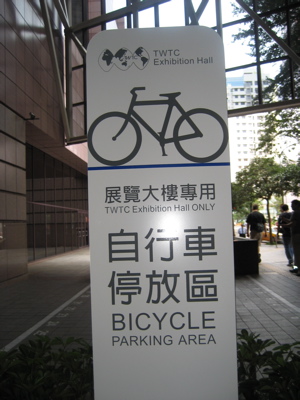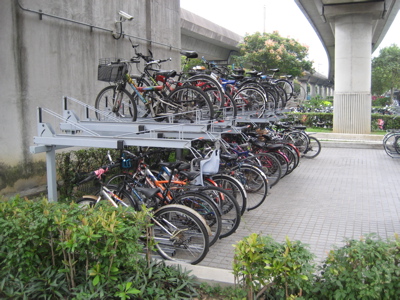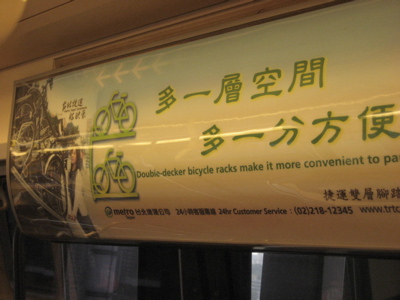
What often seems to happen when Asian countries become more prosperous is that cycling takes on a negative aura in the eyes of the public as they rush headlong into the trappings wealth and consumerism. Seduced by petrol drenched dreams of success, people leave behind the bicycle as if its humble drivetrain chained them to old ways and poverty. And while the heavy industries, upon which their hopes rise to the top of world commerce, choke the air foul and the now swarming cars fill the gaps between with rivers of emissions, the bicycles are further pushed to the margins of the road and sidewalks. But the Taiwan government seems to be aware that the quaint bicycle, together with improved public transportation, can be a terrific foil to the issues of air quality, traffic congestion, and infrastructure of a society overly dependent on automobiles.
Taipei features one of the most modern subway systems, and the Taipei Metro is still expanding. It may have one of the tallest building in the world, but the city is still small compared to an Asian megapolis like Tokyo. My impression was that the Taiwanese don’t want the city to end up as a piece carved by the automobile and its needs: neighborhoods connected and yet separated by car routes, commercial districts dictated by parking lots. Like many large cities in America. Planners have been careful to provide accommodations for bicycles to be parked nearby and even to be taken on the trains.

At the moment, I would say that the average Taiwanese isn’t aspiring to make the bicycle a part of his or her connection to their life in the city, but I think the planners know that building new infrastructure with an eye towards cycling will yield benefits in the future.

We're riding townies, adventure, and mountain bikes. Find recommendations on our store page. As Amazon Associates we earn from qualifying purchases.